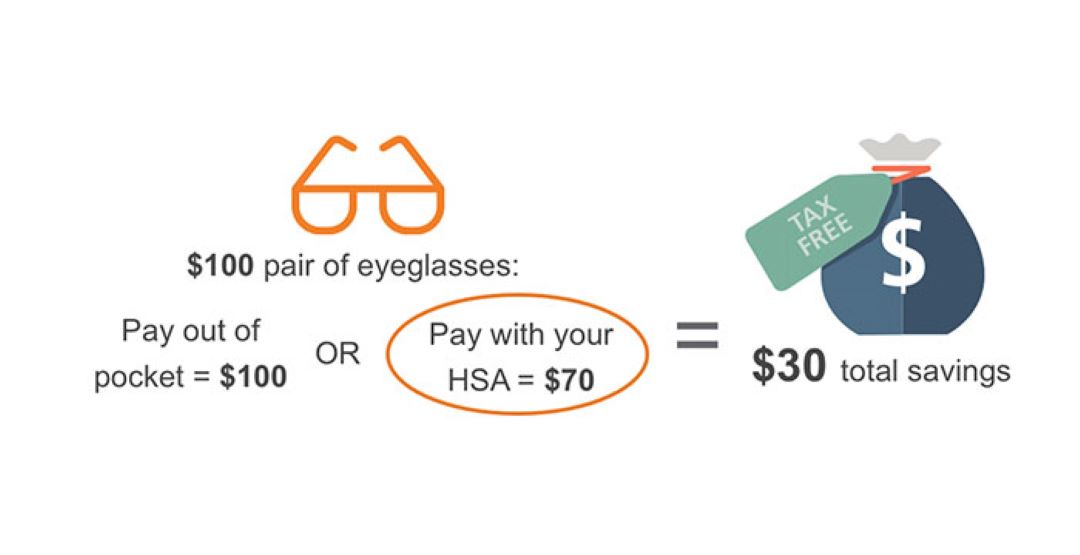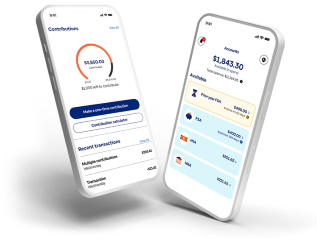Annual contribution limits
There are so many qualified medical expenses that your HSA can help you cover. For more than just deductibles and copays, you can use your funds to pay for dental, vision, chiropractic care, acupuncture and more. Get income tax-free contributions and income tax-free withdrawals for qualified medical expenses. Plus, your money grows income tax-free.
You are responsible for monitoring the amount deposited into your HSA each calendar year. Keep in mind that if your employer contributes funds, those also count toward the maximum. If you exceed the maximum contribution limit, there is a penalty imposed by the IRS. Sign in to your account online to download the Excess Contribution and Deposit Correction Request Form to request an excess contribution refund or a correction to a contribution.
2025 HSA contribution limits:
- An individual with coverage under a qualifying high-deductible health plan (deductible not less than $1,650) can contribute up to $4,300 — up $150 from 2024 — for the year. The maximum out-of-pocket is capped at $8,300.
- An individual with family coverage under a qualifying high-deductible health plan (deductible not less than $3,300) can contribute up to $8,550 — up $250 from 2024 — for the year. The maximum out-of-pocket is capped at $16,600.
2026 HSA contribution limits:
- An individual with coverage under a qualifying high-deductible health plan (deductible not less than $1,700) can contribute up to $4,400 — up $100 from 2025 — for the year. The maximum out-of-pocket is capped at $8,500.
- An individual with family coverage under a qualifying high-deductible health plan (deductible not less than $3,400) can contribute up to $8,750 — up $200 from 2025 — for the year. The maximum out-of-pocket is capped at $17,000.
Catch-up contribution
Once you turn 55, you can contribute an additional $1,000 each year to your HSA, called a catch-up contribution. If you and your spouse are both over the age of 55, you can each contribute an additional $1,000. Your spouse will just need to open their own HSA for their additional portion. Make a catch up contribution today.


For a $100 pair of eyeglasses, you could pay $100 out of pocket, or you could pay $70 with your HSA, which is tax-free money. That's a savings of $30.
Qualified medical expenses
For a $100 pair of eyeglasses, you could pay the $100 out of pocket or you could pay with your HSA. By paying with your HSA you could potentially save an average of $30 because of the tax advantages with your HSA.
Since the money you contribute to your HSA is generally income tax-free, you save 30% on qualified medical expenses that you pay for with your HSA.*
Contribute to your HSA now and sail into retirement
Most retired Americans will need more money to pay for their health care needs than their insurance coverage will provide. Research suggests that a 55-year-old couple retiring in 10 years will need $950,000 in savings — just for health care.

As you're planning for the future, your HSA can ease your mind and prepare you for retirement by saving money income tax-free. Keep in mind that you’ll always pay taxes when you withdraw funds from a 401K. But if you use HSA funds for qualified medical expenses, it’s generally 100% income tax-free.
It's important to max out your HSA now, because once you enroll in Medicare, you can no longer contribute to your HSA — but you can still use it. Your HSA comes in handy because there are certain things that traditional Medicare doesn't cover, such as hearing aids, vision and dental, among many other costs.
Did you know?
After turning 65, you can use your HSA funds for non-qualified expenses, like a boat or an exotic vacation. You’ll pay ordinary income tax on those funds, but the 20% tax penalty no longer applies.
Related resources
Article
Questions about your taxes? We're here to help. You can get copies of your most recent tax forms by signing in to your account.
Article
See five tips you could consider to improve your health savings now and into the future.







